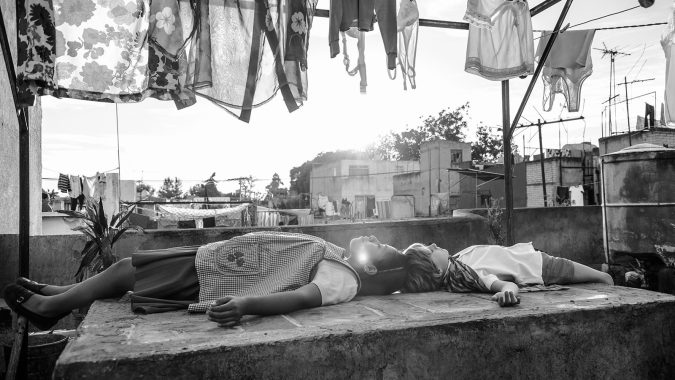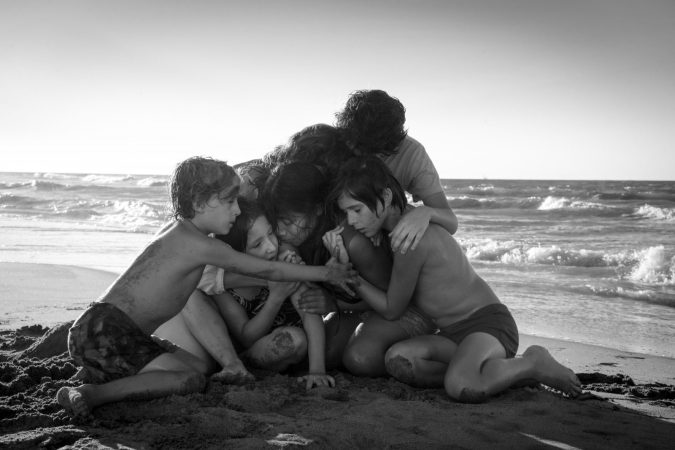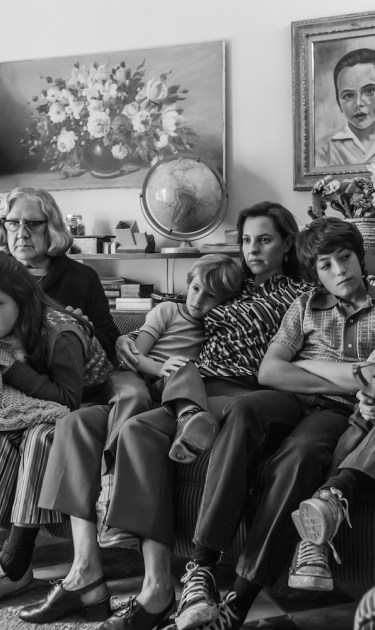Over the weekend, Alfonso Cuarón’s Participant Media-produced masterpiece, Roma, was released internationally, hitting the Netflix’s streaming platform as well as select theaters and inviting audiences into a personal and career-defining film that poignantly balances themes of race, class, and distinctly gendered experiences in 1970s Mexico.
Roma has been described as a love letter to the women that raised Cuarón, primarily focusing on the day-to-day life of a domestic worker named Cleo, who is based on his childhood nanny, Libo, and portrayed with profound earnestness by newcomer Yalitza Aparicio. Cleo is one of two Mixteca women working for a family living in Mexico City’s upper-middle-class Roma neighborhood, mirroring Cuarón’s upbringing and setting the story against the escalating political tensions leading to the 1971 Halconazo student massacre, as well as his parents’ crumbling marriage.

The film is a startling intersection of fiction and Cuarón’s own childhood memories, framing the parallel stories of Cleo and Sofi, the family matriarch, in period-accurate musical queues and vibrant pop culture references. At one point, Juan Gabriel’s “No Tengo Dinero” softly plays on a portable radio as Cleo washes the family’s laundry, dreaming of brighter prospects as she works, while later, Berlioz’ Fantastic Symphony accompanies the intimidating and ever so fastidious introduction of Cuarón’s father, a cold and mythologized figure within the first act of the film.
“It’s the most documentary-like fiction film I’ve ever seen,” says Lynn Fainchtein, the music supervisor behind Roma’s subtle yet painstakingly researched sonic index. “Everything in the film was selected down to the most minuscule detail. I worked with Alfonso [Cuarón] on creating different musical environments around the house. We divided the house in terms of the music that was heard in the children’s room, in the kitchen, in the living room, and that’s how we went about building the musical world within Roma,” Fainchtein says in an interview with Remezcla.

The goal was to use diegetic music as carefully and effectively as possible. Cleo’s singing along to classics by Juan Gabriel and Leo Dan helps brighten the exposition around her routine of daily house chores, while Lupita D’Alessio’s “Mi Corazón Es Un Gitano” underscores the hopelessness of Sofi’s unraveling marriage in melodramatic fashion. Meanwhile, tracks by Mexican rock n’ roll pioneers La Revolución de Emiliano Zapata and Los Terrícolas add contextual texture to the film, reflecting the rowdy discontent of the brewing student counterculture.
Despite its sweeping shots and arresting cinematography, Roma, at its core, is an intimate piece where character silences often communicate more than dialogue, imbuing many of the film’s music choices with narratorial powers. However, to achieve the truly immersive world building experience Cuarón sought to create, Fainchtein had to dive headfirst into the archival rabbit hole.
“It’s the most documentary-like fiction film I’ve ever seen.”
“We put a lot of thought into what music was being played on the radio at the time,” she says. “What were the kids listening to on Radio Éxitos, on XELA [the classical music station]? What commercials were playing on XELA? The ads Corona would run on XELA were not the same as those they would play on Radio Variedades or Radio Éxitos.”
In January, it will be three years since Fainchtein began working on Roma, amassing three terabytes of research data in the process. Her investigations extended to numerous movies and TV commercials featured throughout the film, digging through Televisa’s and the UNAM Filmoteca’s archives to ensure all selections were screened between 1970 and 1971. Authenticity became such a high priority for the project that during Roma’s second act, when the family retreats to an hacienda outside the city to spend New Year’s Eve with friends, unearthed clips from an obscure provincial radio show play in the background.
“These are the most historically accurate representations of Alfonso’s memory,” she stresses, “and my own too. I’m a bit younger than Alfonso, but we’re close enough in age that I was able to immediately identify what he was trying to convey. In many cases, it was less about research, and more about opening up my memory.”

While Roma shines with meticulous curation and attention to detail, Cuarón made the unusual decision of not commissioning a score, adding yet another layer of naturalism to a film that strives to create as realistic a document as possible. He instead uses a military marching band to bookend his parents’ separation, a Norwegian holiday hymn to illustrate pronounced class differences during the film’s surreal New Year’s Eve sequence, and a Mixtec lullaby called “Cilhu” brought to set by Yalitza Aparicio that finds Cleo innocently transcending divisions of race and class between her and the children she cares for.
“Music bonds us,” reflects Fainchtein. “When you sat down to eat in your mother’s kitchen at about 8 or 10 years old and she was listening to Juan Gabriel, that made an impression. Music can tell us a lot about the lives of the people we love. It’s less a matter of how much we love Juan Gabriel and more about the levels on which his music spoke to our mother or grandmother.”
An album under the working title of “Inspired By” is currently in development, with over two-dozen musicians tapped to reimagine songs from the soundtrack or create original pieces based on characters, sounds or reactions to the film. The record is projected for release sometime in February, just ahead of the Academy Awards, and already boasts the involvement of artists of international caliber such as Beck.
With every new announcement, it becomes clearer that Roma is the product of an artistic vision driven by love and honesty. The film might be billed as an ode to the women that shaped Alfonso Cuarón’s childhood, but his thoughtful restraint reveals an even wider reverence for the flawed beauty of Mexican history and the people who’ve shaped it.
Roma is available to stream on Netflix now.




